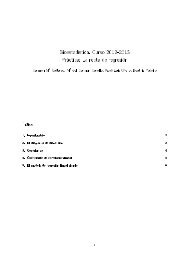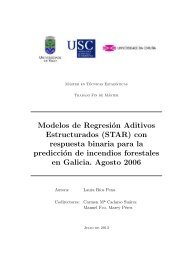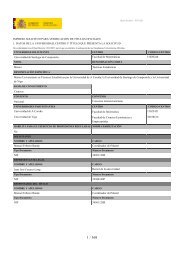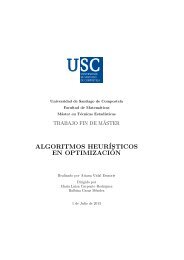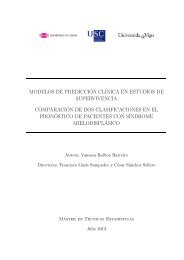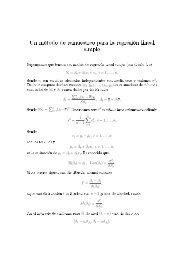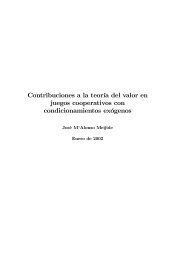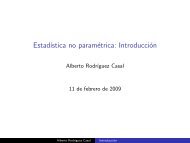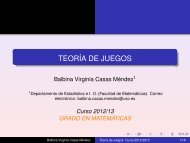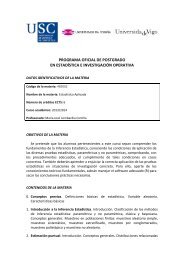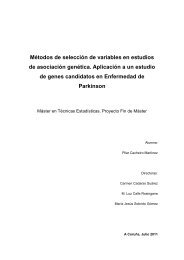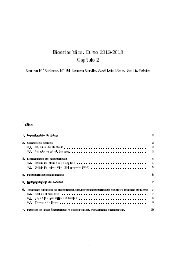Series de Tiempo
Series de Tiempo
Series de Tiempo
You also want an ePaper? Increase the reach of your titles
YUMPU automatically turns print PDFs into web optimized ePapers that Google loves.
Mo<strong>de</strong>los Box-Jenkins<br />
<strong>Series</strong> <strong>de</strong><br />
<strong>Tiempo</strong><br />
Germán<br />
Aneiros Pérez<br />
Introducción<br />
Procesos<br />
ARMA:<br />
Construcción<br />
e<br />
i<strong>de</strong>ntificación<br />
Procesos<br />
ARIMA:<br />
Construcción<br />
e<br />
i<strong>de</strong>ntificación<br />
Procesos<br />
ARIMA<br />
estacionales:<br />
Construcción<br />
e<br />
i<strong>de</strong>ntificación<br />
Estimación<br />
Diagnosis<br />
Selección <strong>de</strong>l<br />
Procesos ARIMA estacionales<br />
Sea X t = S t + V t , don<strong>de</strong> {V t } t<br />
es estacionario y<br />
1 S t = S t−s ,<br />
ó<br />
2 S t = S t−s + W t don<strong>de</strong> {W t } t<br />
es estacionario con media 0.<br />
{X t } t<br />
no es estacionario, pues contiene una componente<br />
estacional S t (<strong>de</strong>terminista ó aleatoria). Sin embargo, el<br />
proceso diferenciado estacionalmente<br />
1 X t − X t−s = V t − V t−s<br />
ó<br />
2 X t − X t−s = W t + V t − V t−s<br />
es estacionario.<br />
Conclusión: A veces, la diferenciación estacional consigue<br />
eliminar la componente estacional.<br />
Germán Aneiros Pérez <strong>Series</strong> <strong>de</strong> <strong>Tiempo</strong>



